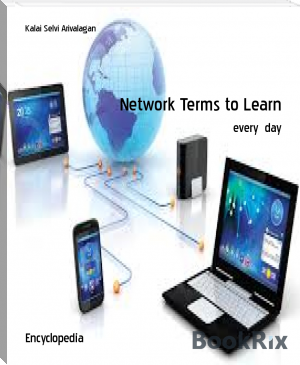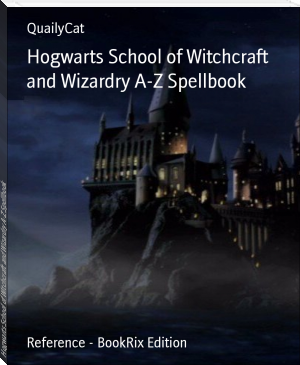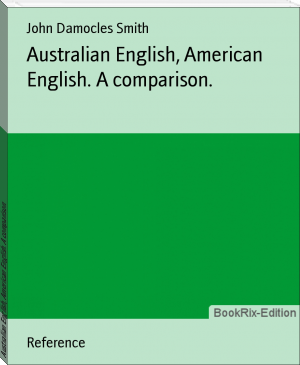Network Terms to Learn by Kalai Selvi Arivalagan (top android ebook reader TXT) 📕

Read free book «Network Terms to Learn by Kalai Selvi Arivalagan (top android ebook reader TXT) 📕» - read online or download for free at americanlibrarybooks.com
- Author: Kalai Selvi Arivalagan
Read book online «Network Terms to Learn by Kalai Selvi Arivalagan (top android ebook reader TXT) 📕». Author - Kalai Selvi Arivalagan
VPN Lethean
“VPN Lethean” or (Lethean VPN) is an independent VPN offering that utilizes blockchain in its design. Lethean VPN planners describe the project as having been composed by a relatively small team. Users can find a Lethean road map and other resources online.
Blockweave
The new term "blockweave" in IT refers to a new data storage protocol that revolutionizes decentralized proof of access to enable low-cost storage. Professionals point out that this new type of blockchain system is meant to solve the twin problems of on-chain data limitations and unsustainable access systems while decreasing the cost of chain storage.
Cryptomining
The practice of “cryptomining” or cryptocurrency mining involves adding various cryptocurrency transactions and evidence of mining work to the blockchain ledger. As a miner works to generate the block contents and algorithmic outputs that make up new blockchain transactions, they are said to be creating a new “coin” of a particular kind in the blockchain.
Delegated Proof of Stake
Delegated proof of stake (DPoS) is a verification and consensus mechanism in the blockchain. It competes with other proof of work and proof of stake models as a way to verify transactions and promote blockchain organization.
Delegated Byzantine Fault Tolerance
Delegated Byzantine Fault Tolerance (dBFT) is a sophisticated algorithm meant to facilitate consensus on a blockchain. Although it is not in common use as of yet, it represents an alternative to simpler proof of stake, proof of importance and proof of work methods.
Proof of Importance
Proof of importance (PoI) is a cryptocurrency term defined as a blockchain consensus technique – essentially, proof of importance works to prove the utility of nodes in a cryptocurrency system, so that they can create blocks.
Block Reward
The bitcoin block reward is a particular rule for the bitcoin cryptocurrency. Bitcoin's developer, Satoshi Nakamoto, thought up the bitcoin reward as a way to control circulation. The bitcoin reward dictates what amount miners get for mining bitcoin.
Proof of Work
Proof of work (PoW) in the cryptocurrency world is an important way to validate coin transaction status and asset management. As an earlier method, it has been augmented by others such as proof of stake and proof of importance.
Bitcoin
Bitcoin is a digital cryptocurrency made up of processed data blocks used for online and brick-and-mortar purchases. Because bitcoins are limited and their value is determined by market forces, bitcoins are also traded like stocks on various exchanges. Relatively new and experimental, bitcoin is described as “the first decentralized digital currency.”
Hard Fork
A hard fork in the world of bitcoin and cryptocurrency is a phenomenon in which a change forces certain divergences in the blockchain, as a result of miner or user activity or a change in rules. In the world of cryptocurrency, there are hard forks and soft forks; unlike a soft fork, a hard fork does not resolve automatically according to user trends.
Initial Coin Offering
An initial coin offering (ICO) in the world of cryptocurrency defines an event by which a community raises funds for a new cryptocurrency project. It is like the cryptocurrency version of an IPO without much of the regulation and process that accompanies similar efforts within the regulated financial world.
Soft Fork
In the world of bitcoin and other cryptocurrencies, a soft fork is where the cryptocurrency chain experiences a divergence. Specifically, soft forks are contrasted with hard forks, which are more expensive and less easy to resolve.
Digital Wallet
A digital wallet is a software-based system for making e-commerce transactions. By using a digital wallet, online purchases can be done easily through computers, tablets or smartphones. In general, bank accounts of individual users are linked with their digital wallet. In a digital wallet system, user credentials are securely stored and verified during transactions.
Digital wallets are not only used for online purchases but also for authentication of the user. A digital wallet can store complete user information including credentials, transaction history and personal details. Digital wallets can also be used in combination with other mobile payment systems.
Augmented Reality Headset
An augmented reality headset is a specialized, head-mounted display device that provides a simulated visual environment through physical display optic lenses, allowing the user to see both a digital display and the world through the glasses. Augmented reality headsets provide virtual images, videos, animation or informational content to users who wear them, allowing them to add virtual elements to the real world they can see through the glasses. This is an emerging technology that aims to transform the world as users see it depending on what they're looking at.
Real Reality (RR)
Real reality (RR) is a term used to refer to the real world, rather than the increasingly engaging and interactive one found online. Real reality is used to distinguish an experience or interaction from virtual reality or any other fictional, fantasy or lifelike experience. Philosophically speaking, what is and isn't real is a matter of debate, especially when virtual reality and other digital experiences are becoming increasingly hard to distinguish from real-life experiences. The term real reality aims to preserve this distinction.
Virtual Reality Modeling Language (VRML)
Virtual Reality Modeling Language (VRML) is an open-standard programming language created to design three-dimensional (3-D) and Web-based models, textures and illusion. VRML is used to illustrate 3-D objects, buildings, landscapes or other items requiring 3-D structure and is very similar to Hypertext Markup Language (HTML). VRML also uses textual representation to define 3-D illusion presentation methods. VRML is also known as Virtual Reality Markup Language.
Virtual Dedicated Server
A virtual dedicated server (VDS) is an Infrastructure as a Service (IaaS) cloud offering that allows users to provision an isolated server over the internet. It provides functionality and resources similar to an in-house server but is managed on a rental basis by a cloud service provider. A VDS provides small to full-scale server instances, depending on the provider’s resource requirements and capabilities.
Paravirtualization
Paravirtualization is a virtualization technique that provides an interface to virtual machines that are similar to their underlying hardware. In paravirtualization, the guest operating system is explicitly ported before installing a virtual machine because a non-tailored guest operating system cannot run on top of a virtual machine monitor (VMM).
Cloud-in-a-Can
A cloud-in-a-can is a single product that allows a company to deploy a private virtual environment protected by a firewall. Cloud-in-a-can products are intended to reduce the costs of setting up cloud infrastructure. Cloud-in-a-can solutions are usually a combination of software and the hardware needed to run it properly. Cloud-in-a-can solutions are also referred to as cloud-in-a-box.
VM Rightsizing
VM rightsizing is an administrative process wherein system administrators optimize the allocation of resources within a virtualized hardware environment.
Virtualization Health Chart
A virtualization health chart is a data visualization construct that monitors and helps administrators stay on top of virtualized environments, from the hardware hosts and networking, down to the virtual machines themselves. The charts show the health of all the elements in the virtualization environment in real time, allowing for preemptive action or quick response if problems do occur.
Self-Driving Data Center
A self-driving data center is a data center that is highly automated to the point where it requires little human intervention to maintain. The term is used by analogy with self-driving cars that can navigate by themselves. The term is described as a theoretical goal, as most data centers still require system administrators.
Deep Learning
Deep learning is an iterative approach to artificial intelligence (AI) that stacks machine learning algorithms in a hierarchy of increasing complexity and abstraction. Each deep learning level is created with knowledge gained from the preceding layer of the hierarchy.
The first layer of a deep image recognition algorithm, for example, might focus on learning about color patterns in training data, while the next layer focuses on shapes. Eventually, the hierarchy will have layers that focuses on various combinations of colors and shapes, with the top layer focusing on the actual object being recognized.
Deep learning is currently the most sophisticated AI architecture in use today. Popular deep learning algorithms include:
Convolutional neural network - the algorithm can assign weights and biases to different objects in an image and differentiate one object in the image from another. Used for object detection and image classification.
Recurrent neural networks - the algorithm is able to remember sequential data. Used for speech recognition, voice recognition, time series prediction and natural language processing.
Long short-term memory networks - the algorithm can learn order dependence in sequence prediction problems. Used in machine translation and language modeling.
Generative adversarial networks - two algorithms compete against each other and use each other's mistakes as new training data. Used in digital photo restoration and deepfake video.
Deep belief networks - an unsupervised deep learning algorithm in which each layer has two purposes: it functions as a hidden layer for what came before and a visible layer for what comes next. Used in healthcare sectors for cancer and other disease detection.
R (Statistical Programming Language)
R is an open-source statistical programming language and framework that's used for a wide range of scientific applications, including machine learning. R is a popular skill requirement for job openings in artificial intelligence and data science.
R is considered to be a well-developed programming language, although it is known to be fairly unconventional when compared to other popular software development languages such as C++ or Java. What makes R stand out from most other languages is that the framework provides developers with an interactive statistical environment for analyzing and visualizing data.
Users can compile and run R on various operating systems including Windows, Unix, Mac OS X and Linux. New code and statistical techniques are shared through groups such as the Comprehensive R Archive Network (CRAN).
SASE (Secure Access Service Edge)
Secure access service edge (SASE) is a network architecture in which security services are delivered over the internet directly to SD-WAN connections through a private backbone that is managed by the SASE provider.
The goal of SASE, which is pronounced “sassy," is to consolidate multiple networking and security functions into one native-cloud software stack that's billed as a single, on-demand cloud service.
Depending upon the provider, a SASE stack may include the following:
Support for Zero-trust Network Access (ZTNA)
Cloud Access Security Broker (CASB) services
Secure Web Gateway (SWG) services
Deep packet inspection services
Virtual private network (VPN) services
Firewall as a service (FWaaS)
Data loss prevention (DLP) services
Term of the day - 33
Virtual Office
Virtual office is a broad term that refers to work environments that are delivered and accessed through Web-based communication and computing technologies. A virtual office replaces the workspace with cyberspace. It works off of Web-based IT services that are used for the initiation, execution and operation of typical office processes.
Network Functions Virtualization (NFV)
Network functions virtualization (NFV) increases and improves network function as well as managing networks. It does so by transforming the way architect networks deliver network services. This is an architectural and creatively designed procedure which chains together different classes of network nodes and creates a form of communication or makes particular information available to users.
X-Y-Z Matrix
An X-Y-Z matrix is a three-dimensional structure whereby the x-axis and y-axis denote the first two dimensions and the z-axis is the third dimension. In a graphic image, the x denotes width, y denotes height and the z represents depth. An X-Y-Z matrix is also known as a 3D matrix.
Query
A query is





Comments (0)